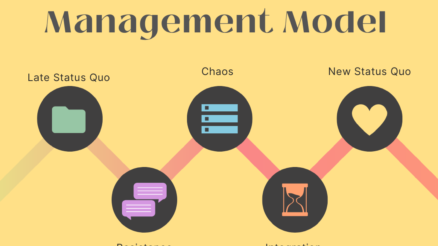Effective external communication is vital for organizations to build strong relationships with stakeholders, enhance brand reputation, and achieve their business objectives.
However, measuring the impact and success of external communication efforts can be challenging without proper evaluation tools.
This is where Key Performance Indicators (KPIs) come into play.
KPIs provide tangible metrics that help assess the effectiveness of external communication strategies and tactics.
In this blog post, we will explore a range of external communication KPI examples that organizations can use to evaluate and optimize their communication efforts.
Let’s start reading
External communication and its significance in organizational performance
External communication refers to the exchange of information, messages, and interactions that occur between an organization and its external stakeholders.
These stakeholders can include customers, clients, suppliers, investors, the media, government entities, and the general public.
The significance of external communication in organizational performance cannot be overstated. Here are a few key reasons why it is crucial:
- Reputation and Image: External communication plays a fundamental role in shaping an organization’s reputation and image. Through effective communication, organizations can establish a positive perception among stakeholders, build trust, and differentiate themselves from competitors. A strong reputation can lead to increased customer loyalty, attracting top talent, and favorable relationships with partners and investors.
- Stakeholder Engagement: Successful organizations recognize the importance of engaging with their stakeholders. External communication provides a platform to connect and interact with customers, suppliers, and other key stakeholders. By keeping stakeholders informed, addressing their concerns, and actively seeking their feedback, organizations can build stronger relationships and foster a sense of loyalty and support.
- Brand Building and Promotion: External communication serves as a vehicle for promoting and reinforcing an organization’s brand. By effectively communicating the organization’s values, mission, and unique selling propositions, it helps create brand awareness and recognition. A well-defined and consistent external communication strategy can strengthen the brand identity, attract customers, and drive business growth.
- Business Opportunities: Effective external communication opens up avenues for business opportunities. By showcasing their expertise, thought leadership, and industry insights, organizations can attract potential clients, partners, and investors. Engaging in strategic communication initiatives such as conferences, events, and media interactions can lead to new collaborations, partnerships, and growth opportunities.
What are Key performance indicators?
Key Performance Indicators (KPIs) are quantifiable metrics that organizations use to assess their progress towards achieving specific goals and objectives. KPIs provide a way to measure performance, track trends over time, and evaluate the effectiveness of strategies and initiatives.
In the context of external communication, KPIs help measure and evaluate the impact and success of communication efforts directed towards external stakeholders.
You can read more about how to develop key performance indicators.
Essential External Communication KPI Examples
There are six broad ares that covers all essential key performance indicators related to external communication. These areas include media coverage, social media engagement, website traffic, customer satisfaction, brand perception and stakeholder relationships.
Let’s discuss each of these external communication KPI examples.
Media Coverage
Media coverage KPIs track quantity, sentiment, reach, and visibility of organizational media presence. Monitoring these KPIs helps organizations enhance their brand reputation, increase visibility, and maintain positive relationships with the media and the public.
Following are specific KPIs used to track organizational media coverage.
1. Number of press mentions or media placements
This KPI measures the quantity of media coverage an organization receives. It involves counting the number of times the organization is mentioned or featured in news articles, press releases, interviews, or other media channels. By tracking this KPI, organizations can evaluate their media presence and assess the effectiveness of their media relations efforts.
2. Share of positive, neutral, and negative coverage
This KPI focuses on the sentiment or tone of the media coverage an organization receives. It involves categorizing media mentions as positive, neutral, or negative based on the content and context of the coverage. Analyzing the distribution of sentiment allows organizations to understand how their external communication efforts are being perceived by the media and the public.
3. Reach and visibility of media coverage
This KPI assesses the extent of the audience reached by the organization’s media coverage. It measures the potential number of individuals who were exposed to the organization’s messaging through media channels. Reach can be quantified by metrics such as circulation figures, online readership, or viewership.
Social Media Engagement
Social media engagement is nowadays most important aspect of external communication. Organizations actively assess the effectiveness of their external communication on social media platforms. Through this, organizations optimize their social media presence, improve audience engagement, and cultivate meaningful relationships with their online community.
Following are specific KPIs used to track social media engagement.
4. Number of followers and fans across platforms
This KPI measures the size of an organization’s social media audience. It involves tracking the number of followers, fans, or subscribers across various social media platforms such as Facebook, Twitter, Instagram, LinkedIn, or YouTube. The growth of followers and fans indicates the reach and interest in the organization’s content. Increasing the number of followers and fans can expand the organization’s online presence, widen its potential audience, and increase the opportunities for external communication and engagement.
5. Engagement metrics such as likes, comments, and shares
This KPI tracks the level of interaction and engagement that social media posts generate. It includes tracking metrics such as likes, comments, shares, retweets, or reactions on posts. These engagement metrics provide insights into how the organization’s content resonates with its social media audience. Higher levels of engagement indicate a stronger connection with the audience.
6. Reach and impressions of social media posts
This KPI gauges the potential audience size and exposure of social media posts. Reach refers to the number of unique users who see a post, while impressions represent the total number of times a post is displayed, including multiple views by the same user. Monitoring reach and impressions helps organizations gauge the visibility and impact of their social media content.
Website Traffic and Analytics
Organizations can evaluate the effectiveness of their external communication efforts in driving website engagement and conversions. This information enables organizations to optimize their website content, user experience, and external communication strategies to attract and engage visitors, convert them into leads or customers, and ultimately achieve their business objectives.
Following are specific KPIs used to measure website traffic.
7. Number of website visits and unique visitors
This KPI measures the overall traffic to an organization’s website. It involves tracking the total number of visits to the website and the number of unique visitors (individual users) during a specific period. Monitoring this KPI helps organizations assess the reach and popularity of their website. Increasing the number of website visits and unique visitors indicates successful external communication efforts, as it shows that more individuals are being attracted to the organization’s online presence.
8. Conversion rates of website visitors to leads or customers
This KPI focuses on the effectiveness of the organization’s website in converting visitors into valuable actions such as leads or customers. It measures the percentage of website visitors who take a desired action, such as making a purchase, filling out a contact form, subscribing to a newsletter, or requesting more information. Higher conversion rates indicate that the website is engaging and compelling enough to prompt visitors to take the desired action.
9. Time spent on the website and bounce rate
This KPI provides insights into the level of visitor engagement and the quality of the website’s content. Time spent on the website measures the average duration that visitors spend exploring the site. A longer average time indicates that visitors are actively engaged with the content and finding value in it. On the other hand, bounce rate refers to the percentage of visitors who leave the website after viewing only one page, indicating a lack of engagement or relevance.
Customer Satisfaction and Feedback
By tracking these customer satisfaction and feedback KPIs, organizations can assess the success of their external communication in delivering a positive customer experience.
Following are some specific KPIs examples that help to track customer satisfaction and feedback.
10. Net Promoter Score (NPS) or customer satisfaction ratings
This KPI measures the level of customer satisfaction and loyalty. NPS is a widely used metric that asks customers to rate their likelihood of recommending the organization’s product or service to others on a scale of 0 to 10. The scores are then categorized into promoters (9-10), passives (7-8), and detractors (0-6). By calculating the NPS, organizations can assess the overall satisfaction and loyalty of their customer base.
11. Number of customer complaints and response time
This KPI focuses on customer feedback and complaint management. Tracking the number of customer complaints received and the time it takes to respond to them helps organizations understand the effectiveness of their external communication in addressing customer concerns. A lower number of complaints and a faster response time indicate a proactive approach to resolving customer issues, resulting in improved customer satisfaction and loyalty.
12. Customer reviews and ratings on review platforms
This KPI evaluates the sentiment and perception of customers expressed through reviews and ratings on external platforms such as review websites, social media, or online marketplaces. Monitoring customer reviews and ratings provides insights into the overall customer experience and the effectiveness of external communication in delivering on promises. Positive reviews and high ratings indicate customer satisfaction and a favorable brand image.
Brand Perception
By tracking these brand perception KPIs, organizations can gain valuable insights into how their external communication efforts are shaping brand perception among the target audience.
Given below are some examples of KPIs for brand perception.
13. Surveys or focus groups measuring brand perception
This KPI involves conducting surveys or focus groups to gather data on how the target audience perceives the brand. These research methods typically include questions that assess various aspects of brand perception, such as brand awareness, brand recognition, brand reputation, and brand associations.
14. Perception of brand values and attributes
This KPI focuses on assessing how the target audience perceives the values and attributes associated with the brand. It involves measuring the alignment between the intended brand values and the perceived brand values among the audience. By evaluating the audience’s perception of brand attributes such as trustworthiness, innovation, sustainability, or customer-centricity, organizations can gauge the effectiveness of their external communication efforts in conveying the desired brand image and values.
15. Comparison with competitors’ brand perception
This KPI involves comparing the brand perception of the organization with that of its competitors. It includes gathering data on how the target audience perceives the organization’s brand in relation to its competitors. This comparison helps organizations understand their competitive positioning and identify opportunities to differentiate themselves through their external communication strategies.
Stakeholder Relationships
External communication always aim to manage stakeholder relationship. Measuring this relationship help assessing organizational efforts in engaging its key stakeholders.
Following are some main KPIs that help to measure stakeholder relationship.
16. Number and quality of partnerships or collaborations
This KPI measures the quantity and quality of partnerships or collaborations established with stakeholders. It involves tracking the number of strategic alliances, joint ventures, sponsorships, or other forms of partnerships formed with external entities. Additionally, assessing the quality of these partnerships considers factors such as mutual benefits, shared goals, and effective communication.
17. Stakeholder surveys or interviews on communication effectiveness
This KPI involves gathering feedback from stakeholders through surveys or interviews to assess the effectiveness of external communication. Stakeholders may include customers, clients, employees, suppliers, or community members. The surveys or interviews can focus on various aspects of communication, such as clarity, relevance, frequency, and channels used.
18. Feedback from stakeholders on perceived value of communication
This KPI focuses on obtaining feedback from stakeholders regarding the perceived value they derive from the organization’s external communication efforts. It involves soliciting input on how the organization’s communication contributes to their understanding, trust, engagement, or decision-making processes. By assessing stakeholders’ perceptions of communication value, organizations can gauge the impact and effectiveness of their external communication strategies.
Final Words
Effective external communication is crucial for organizations to thrive in today’s dynamic business landscape. By implementing key performance indicators (KPIs) to measure various aspects of external communication, organizations can gain valuable insights into their media coverage, social media engagement, website traffic, customer satisfaction, brand perception, and stakeholder relationships. Therefore, external communication KPI examples provide measurable data that helps organizations assess the impact of their communication strategies, identify areas for improvement, and make informed decisions to enhance their communication efforts.



